Tóm tắt nhanh
We break down what makes B2B content marketing unique and how to use it to attract qualified leads, nurture relationships, and convert prospects into customers. You’ll learn how to build a content system that supports every stage of the sales funnel, what content types to prioritise, and how to measure real ROI. For more insights and strategies, visit our blog.
Need an Effective Content Marketing Strategy for Your B2B Business?
B2B buyers face longer sales cycles and complex decision-making processes. This means your content must do more than just attract attention; it needs to educate, build trust, and guide prospects through multiple stages.
Without a focused strategy, your content risks being unfocused or overly promotional, missing critical chances to influence buyers. A strong B2B content marketing strategy targets the right audience, supports sales teams, and compounds over time into a reliable growth engine.
Developing this strategy involves deep audience research, clear goal setting, and aligning content with the buyer’s journey. For a detailed approach, check out this Embarque guide to building an effective B2B content marketing strategy that drives results.
Vì sao nên đặt niềm tin vào chúng tôi ?
At Embarque, we don’t just talk the talk, we’ve helped over 50 B2B companies turn content into a powerful growth engine. From scrappy startups to established enterprises, our strategies have boosted traffic, leads, and revenue in competitive markets.
We know the B2B landscape inside out, and we get how complex buyer journeys demand smart, targeted content. Our approach blends deep SEO know-how with real-world business sense, so your content not only ranks but resonates.
When you work with us, you’re partnering with a team obsessed with results, clarity, and growth that lasts. No fluff, just proven tactics that move the needle.
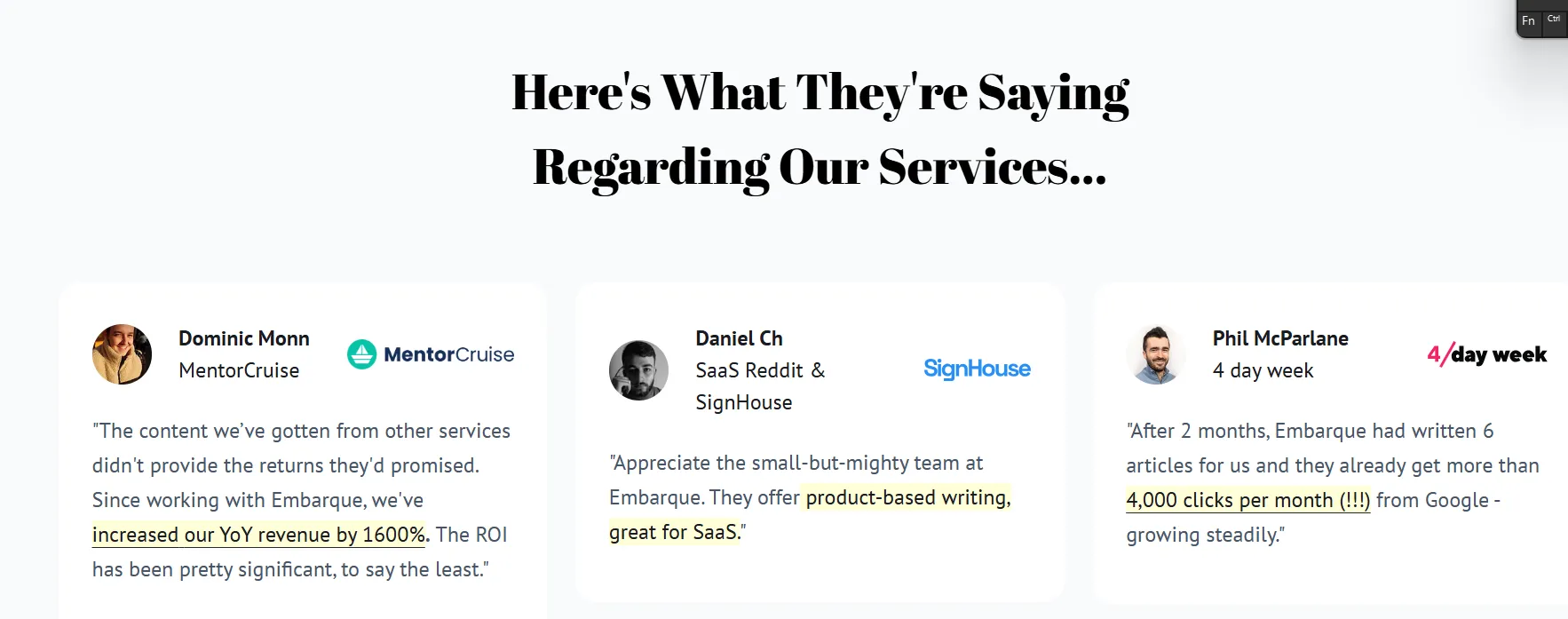
B2B Content Marketing vs. General Content Marketing
B2B content marketing is different from general content marketing in important ways. Knowing these differences helps you create content that works better for your business and your audience.
Let’s explore the main points that set them apart:
1. Audience Complexity
B2B content marketing targets multiple decision-makers and stakeholders within an organisation. Each role has different needs, concerns, and priorities. Content must address these varied perspectives to guide the entire buying team.
In contrast, general content marketing often targets individual consumers with simpler, more direct messaging tailored to personal preferences and emotions.
2. Sales Cycle Length
B2B sales cycles tend to be longer, sometimes spanning several months. Content must nurture leads through multiple stages, from awareness to evaluation and purchase.
General content marketing usually supports shorter sales cycles, focusing on quick conversions and immediate purchasing decisions.
3. Content Depth and Complexity
B2B content is typically more detailed, educational, and research-driven. It includes whitepapers, case studies, webinars, and technical guides that help build trust and authority.
General content marketing often uses lighter, more entertaining formats like social media posts, videos, and product reviews aimed at engaging broad audiences quickly.
4. Conversion Goals
The primary goal in B2B content marketing is to generate qualified leads who can move through the sales funnel and become customers.
General content marketing focuses more on increasing brand awareness and driving immediate sales or actions from individual consumers.
5. Content Formats
B2B marketers commonly use in-depth articles, ebooks, case studies, and webinars designed to educate and support long-term relationships.
General marketers often prioritise short-form content, influencer partnerships, and multimedia that catch attention quickly.
Why Is B2B Content Marketing Important?
- Attracts the right crowd, not just any crowd. Instead of shouting into the void, B2B content marketing pulls in people who actually need what you offer. It’s like throwing a magnet instead of a fishing net, way more efficient and way less guesswork.
- Builds trust like a pro. When your content educates and helps, you become the go-to expert. In B2B, trust is the currency. Good content means buyers come knocking because they believe you know your stuff.
- Guides prospects through the maze. B2B buying journeys can feel like a labyrinth with multiple decision-makers and twists at every turn. Your content acts like a friendly guide, lighting the path and answering questions before they even know to ask.
- Saves marketing dollars while boosting impact. Instead of throwing endless cash at ads that may or may not work, great content keeps working for you. It keeps attracting visitors, generating leads, and closing deals long after you hit publish.
- Turns customers into lifelong fans. Content doesn’t stop at the sale. Helpful guides, case studies, and resources keep customers happy, encourage upgrades, and make them cheerleaders for your brand.
Types of Content That Work in B2B
Here are the content types that consistently deliver results for B2B brands:
- Thought Leadership Articles
Thought leadership articles establish your brand as a trusted voice in your industry. They focus on big-picture trends, emerging challenges, and innovative ideas that resonate with business decision-makers. Embarque often advises clients to invest in this content type because it helps build credibility, foster engagement, and open doors to partnerships and opportunities.
For example, our work with MentorCruise leveraged thought leadership and optimised landing pages to drive a 1600% year-over-year revenue increase, proving the power of authoritative content.
- Whitepapers and Ebooks
Whitepapers and ebooks offer deep dives into complex topics relevant to your target audience. These resources provide detailed research, data, and analysis that help prospects evaluate solutions during longer B2B sales cycles.
We encourage using these formats as lead magnets because they require visitors to share contact information, creating valuable leads that sales teams can nurture effectively. The depth and quality of these assets demonstrate authority and reinforce trust.
- Case Studies and Testimonials
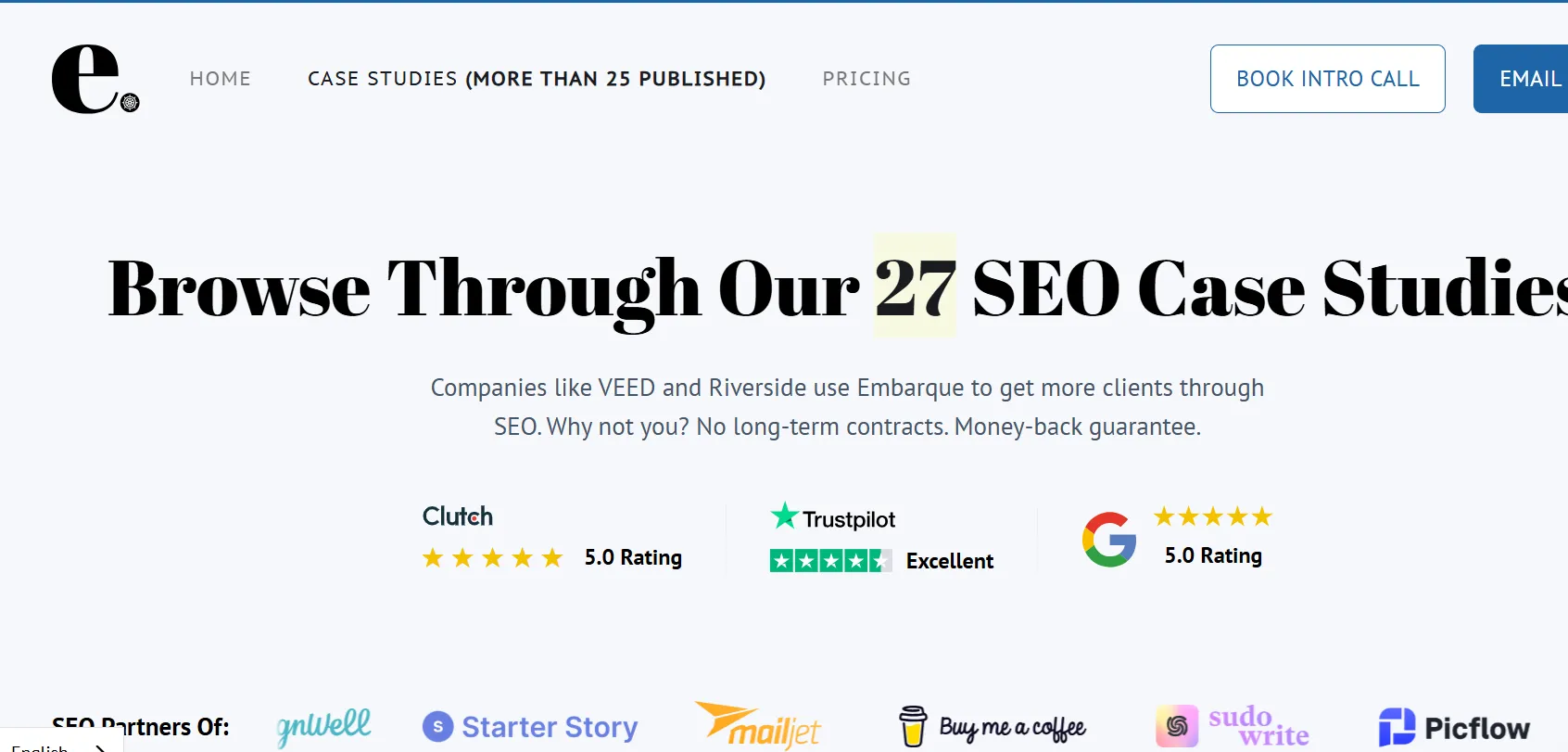
Real-world success stories are among the most persuasive content pieces in B2B marketing. Case studies detail how your product or service solved specific problems, delivered ROI, or improved processes. Testimonials add social proof from satisfied customers, increasing buyer confidence. Embarque prioritises creating compelling case studies that highlight measurable results.
Our work with 4 Day Week, which achieved over 4,000 organic clicks in just two months through informative articles and case studies, highlights how storytelling can quickly build authority and traffic.
- Webinars and Video Content
Webinars and videos offer dynamic, interactive ways to engage your audience. Webinars allow live demonstrations, Q&A sessions, and direct interaction with prospects, which Embarque finds invaluable for nurturing leads in complex sales.
Videos, such as product demos or explainer clips, simplify complicated information and hold viewer attention longer than text alone. These formats cater to different learning styles and help accelerate the buyer journey.
- Product Demos and Tutorials
Detailed product demos and tutorials show potential customers exactly how your software solves their problems. Embarque recommends these content types to reduce objections and build confidence during the evaluation phase. By walking users through key features and use cases, demos and tutorials make your offering tangible, helping prospects visualise success and shortening the path to purchase.
For example, our collaboration with Flick, which saw a 178% increase in blog traffic by creating detailed, SEO-focused content, shows how product-centric educational materials attract and convert visitors.
Key Principles of B2B Content Marketing
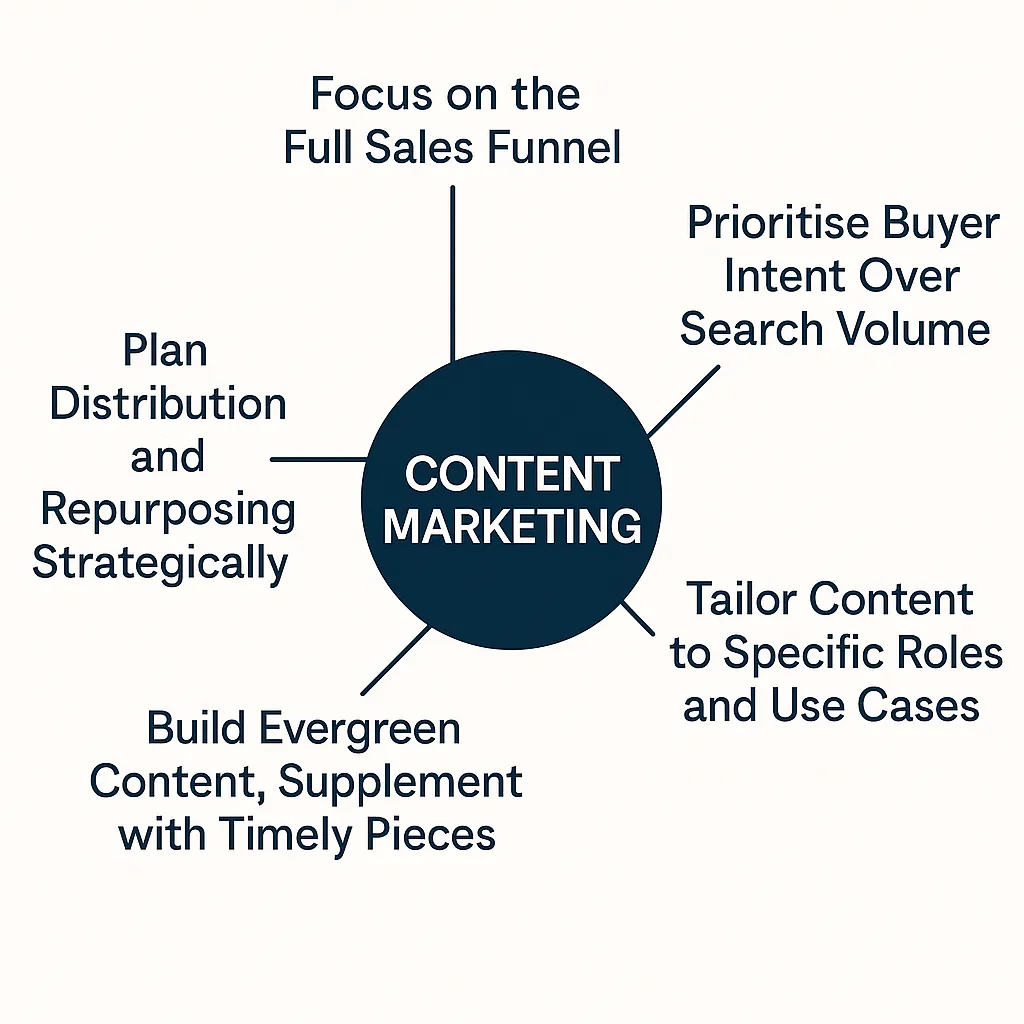
- Focus on the Full Sales Funnel: B2B buyers move through multiple stages before making a purchase. Your content should guide them at every step, from raising awareness and educating prospects about their problems, to helping them evaluate solutions, and finally supporting their buying decision. Covering the entire funnel ensures you nurture leads consistently and don’t lose them halfway through the journey.
- Prioritise Buyer Intent Over Search Volume: Instead of targeting only popular keywords with high search volume, focus on those that match what your buyers are actually looking for. Keywords that reflect real purchase intent or specific pain points bring visitors more likely to convert. This makes your SEO efforts efficient and aligned with business goals.
- Tailor Content to Specific Roles and Use Cases: B2B purchasing often involves several stakeholders, executives, technical teams, and end users, each with different concerns. Craft content that addresses the unique needs and questions of these roles. Use case studies, whitepapers, or product demos to show how your solution fits their exact situation.
- Build Evergreen Content, Supplement with Timely Pieces: Evergreen content like comprehensive guides, FAQs, and best practices continues to attract and engage audiences long after publishing. Supplement these with timely content such as industry news, product updates, or trend analyses to keep your brand relevant and top of mind.
- Plan Distribution and Repurposing Strategically: Publishing great content is only half the battle. Amplify your reach by promoting content through email newsletters, social channels, partnerships, and targeted paid campaigns. Repurpose assets into formats like videos, infographics, or slide decks to reach different audiences and maximise your content’s value.
Measuring the ROI of B2B Content Marketing
Measuring the true impact of your B2B content marketing can feel like chasing shadows. But with the right metrics and tools, you can turn guesswork into clear, data-driven decisions that fuel growth.
Here are what you should focus on:
Tracking Website Traffic and Engagement Metrics
Measuring B2B content marketing ROI begins with tracking how much traffic your content generates. Use tools like Google Analytics to monitor organic traffic, page views, session duration, and bounce rates. Pay attention to visits on key landing pages and blog posts related to your campaigns.

Engagement metrics such as time spent on page, scroll depth, and return visits reveal how well your content resonates. Higher engagement indicates that prospects find your content valuable and are more likely to move further down the funnel.
Measuring Lead Generation and Conversion Rates
Traffic is just the start; understanding how well your content converts visitors into leads is critical. Track actions like newsletter sign-ups, demo requests, and content downloads using conversion tracking in your marketing platform.
Compare conversion rates before and after new content launches to identify what truly drives lead capture. Align content pieces with clear lead generation goals to ensure each asset contributes effectively to your sales funnel.
Connecting Content to Pipeline and Revenue
The ultimate test of content marketing ROI is how it impacts pipeline growth and revenue. Integrate your CRM and marketing tools to track leads originating from content through to closed deals.
This attribution provides insight into which content drives the most revenue, helping justify investment and guide future strategy.
Using Analytics Tools for Deeper Insights
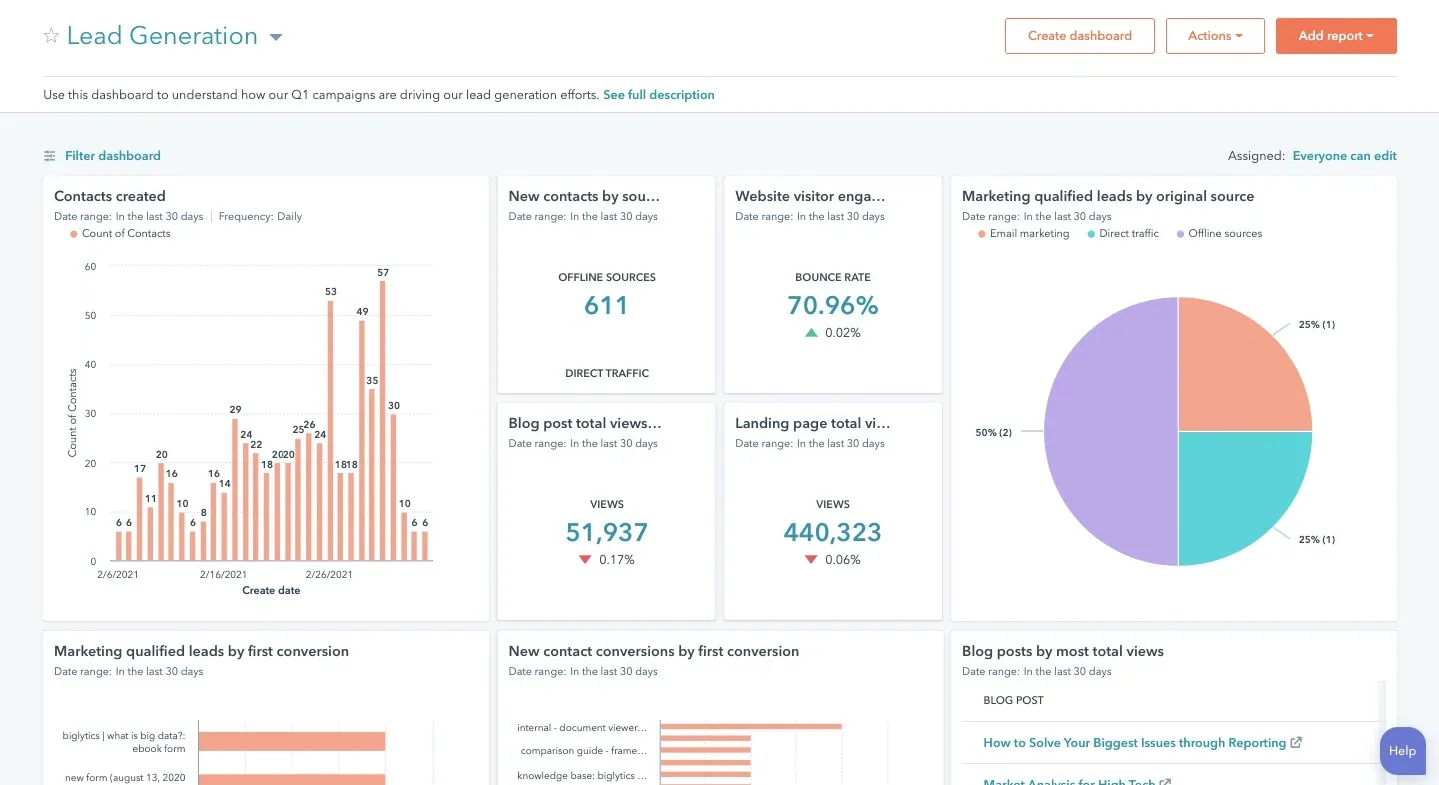
Advanced analytics platforms like HubSpot, Marketo, or Google Data Studio let you combine SEO data, lead metrics, and revenue in custom dashboards. These insights help you spot top-performing content, identify funnel gaps, and optimise campaigns.
Regular review and analysis ensure your content strategy evolves based on real data, maximising your ROI over time.
Calculating ROI: Balancing Cost and Impact
ROI compares revenue generated from content marketing against the total cost of content creation, promotion, and management. Use this simple formula:
ROI (%) = [(Revenue from Content - Content Costs) ÷ Content Costs] × 100
B2B content marketing builds momentum gradually, so expect compounding returns rather than instant wins. For a quick estimate of your SEO-driven revenue and ROI, try Embarque’s free Marketing ROI Calculator.
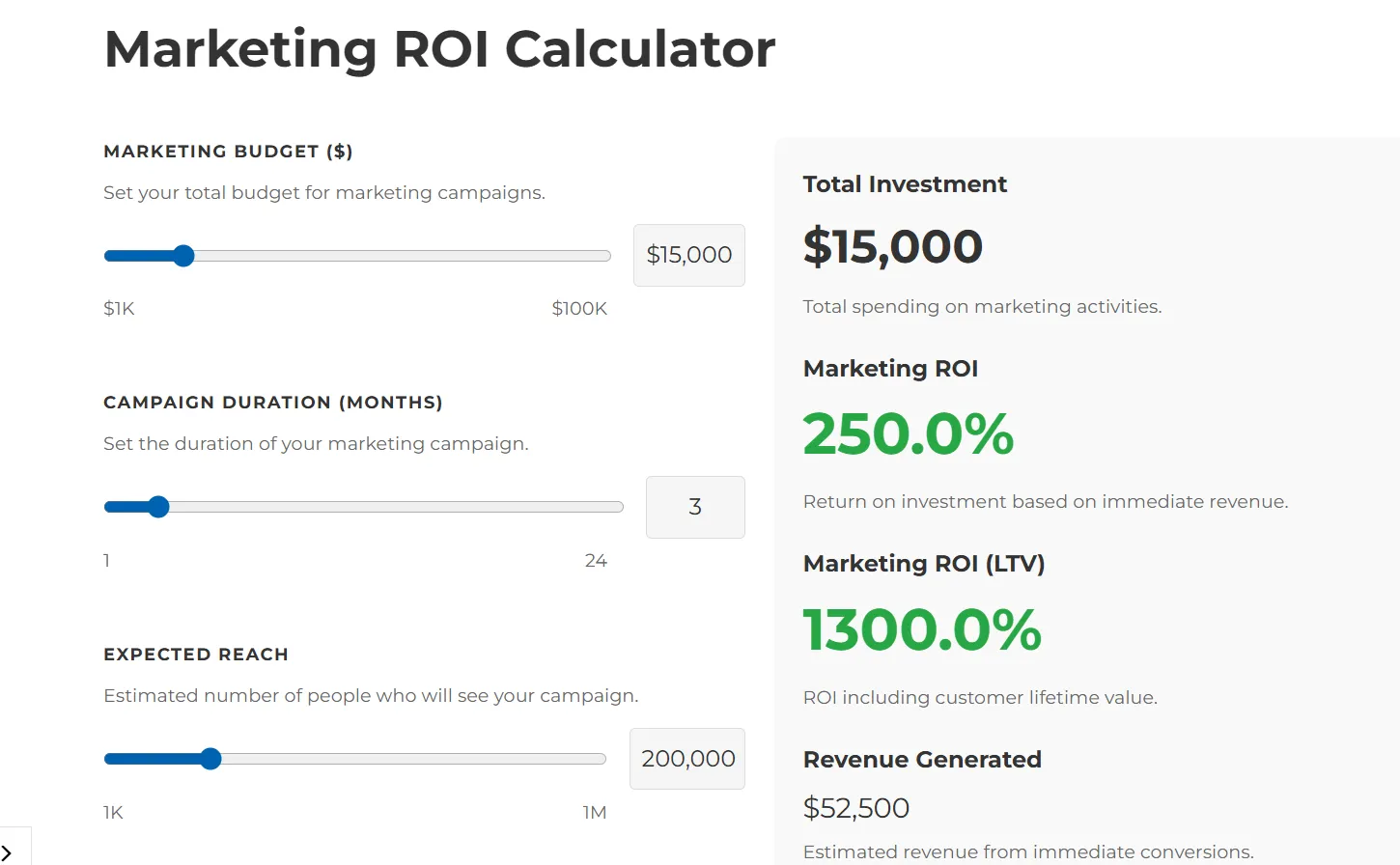
Qualitative Benefits and Long-Term Value
Not all content marketing value shows up in immediate numbers. It also builds brand awareness, trust, and thought leadership — factors that influence decisions over time.
Gather feedback from sales and customers to understand how content supports conversations and overcomes objections. Combining qualitative insights with data gives you a complete picture of your content marketing’s effectiveness.
Scale Your Business with a Winning Content Strategy
A strong B2B content marketing strategy is more than just creating content. It means building a system that consistently attracts, educates, and converts your ideal customers. When you focus on quality, relevance, and alignment with your buyers’ journey, your content becomes a powerful engine for growth.
At Embarque, we help B2B businesses design and execute content strategies that scale effectively and deliver measurable results. Ready to take your content marketing to the next level?
Contact us today and start turning your content into your most valuable growth asset.


.svg)
.png)


%20(2).png)
%20(2).png)

%20(2).png)





